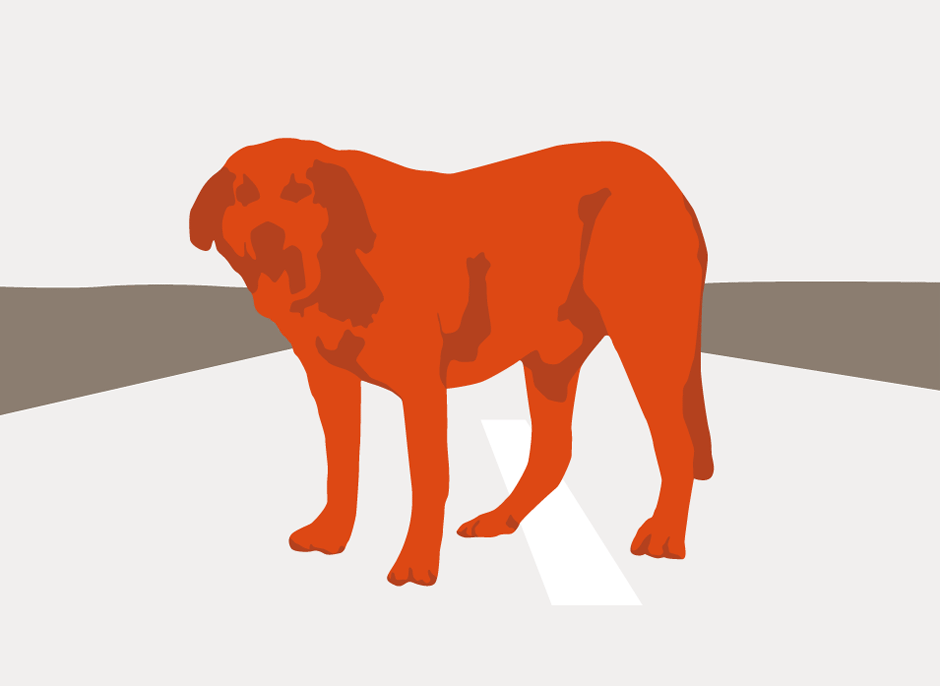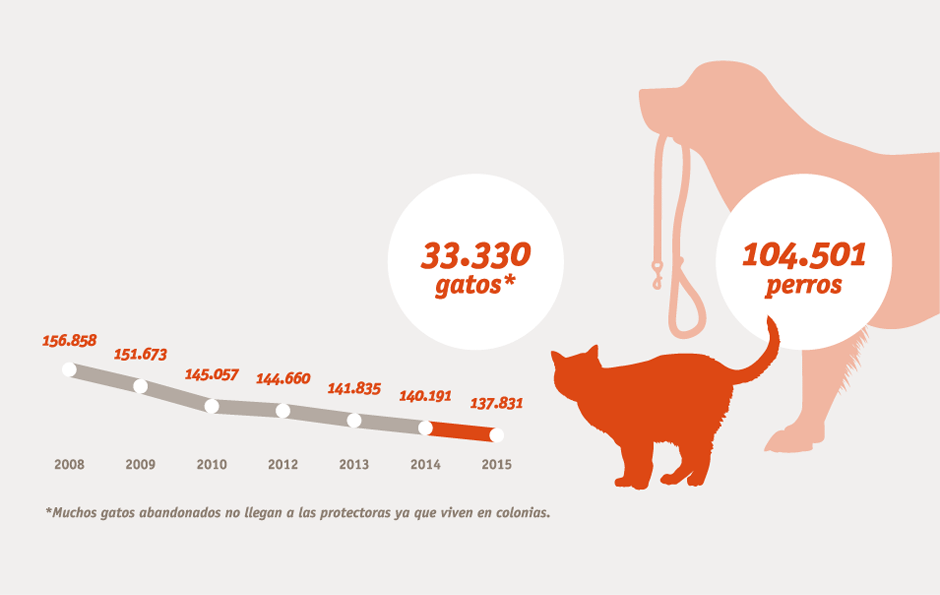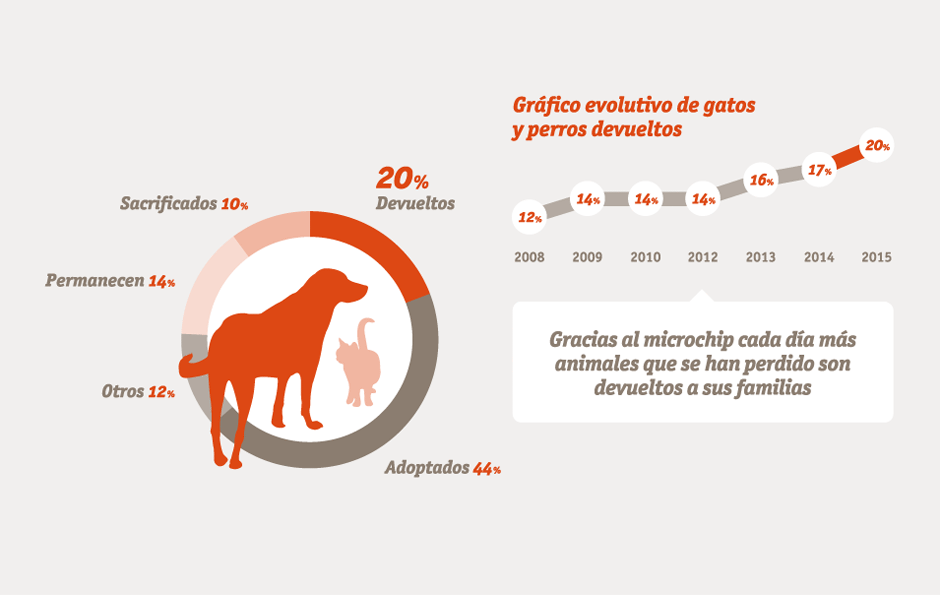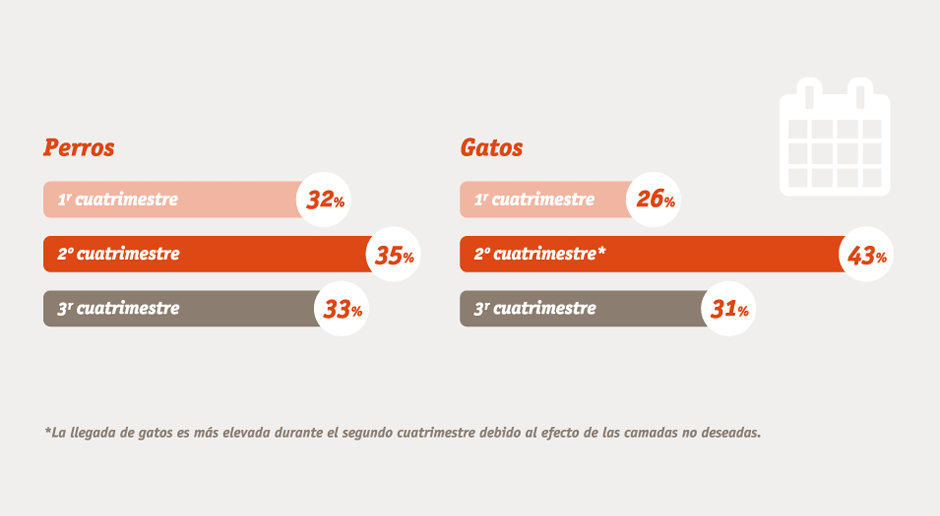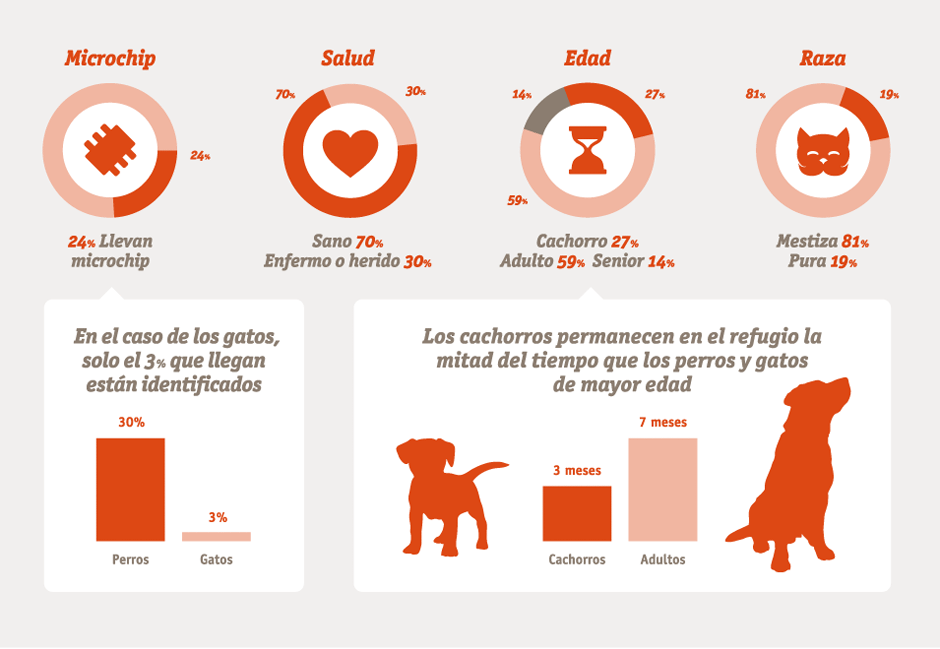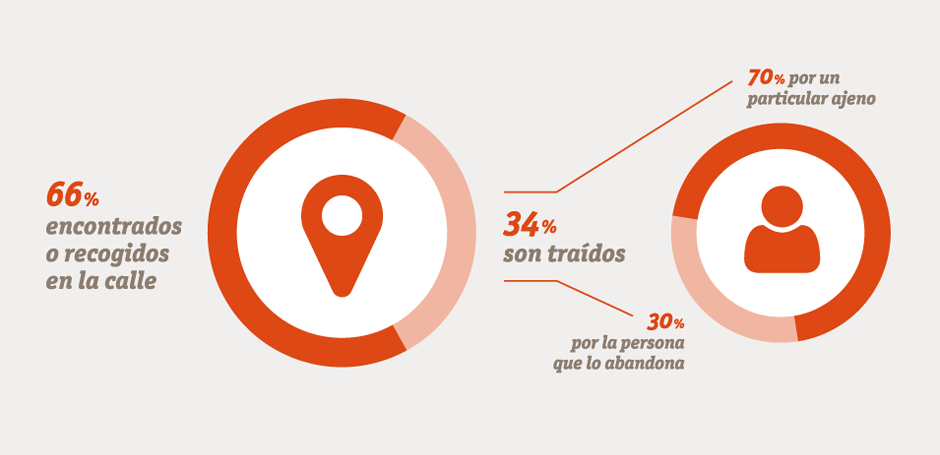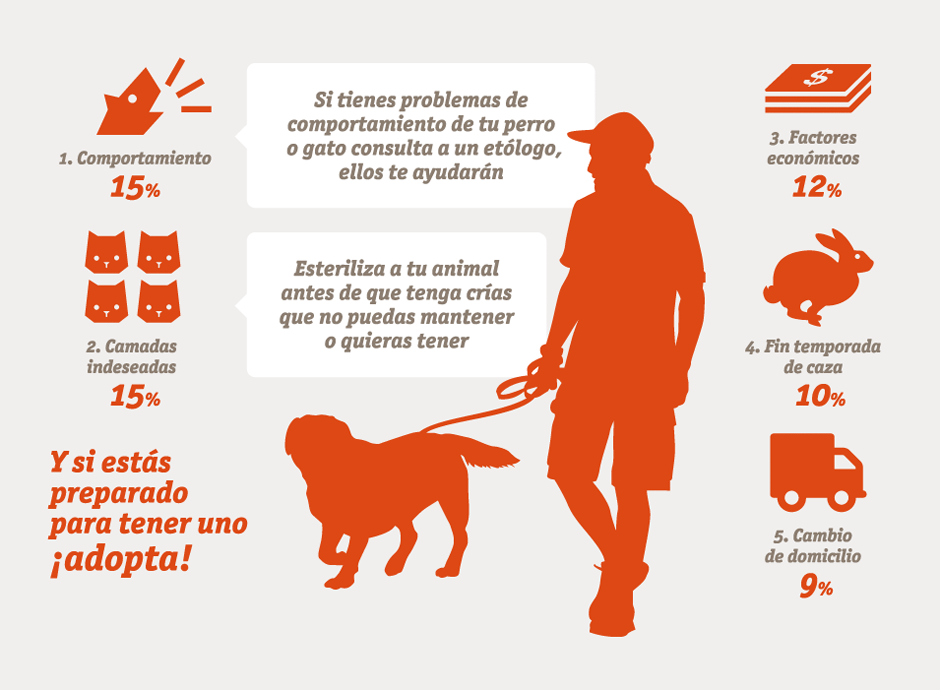|
|
FIGURES OF ABANDONMENT OF DOGS AND CATS STILL VERY FAR FROM DESCENCER. The figures of the abandonment of dogs and cats still far from descending
More than 137.000 dogs and cats were collected the year last according to emphasizes the study of abandonment and adoption 2016 Foundation 2016. Is a data worrying and that notes that the abandonment continues being a problem structural that accurate a greater intervention and cooperation of all them agents involved to achieve decrease this figure and that is can ensure the well-being of dogs and cats in our society.
Many dogs and cats were collected for shelters and protectors of animals in? 2015?
Although from the 2008 There is a decrease in the number of dogs and cats collected by protective societies in our country, It is still a moderate decline, and the number, that the year past was of more than 137.000 abandoned pets is still very high. Over the years we have managed to improve it, but they are still many dogs and cats that are left alone.
However, an important part of pet animals that arrive at a shelter does not really correspond to an abandonment, but probably a loss. In fact, the 20,4% of animals in shelters and protective they could return home thanks to be identified, so It is essential that dogs and cats are suitably identified by microchip to locate their owners.
Where are the dogs and cats that come to an animal shelter?
As mentioned before a 20% they are returned, the 14% they are still in the protective, A 10% they were slaughtered and, the 44% they found a new home. This positive figure shows that promoting adoption is one of the fundamental strategies to reduce the population of abandoned animals and prevent that are slaughtered or spend the rest of his days in the shelter.
Is it in the summer when more dropouts occur?
Contrary to what one may think that dogs are more abandoned in the Central months of year, the truth is that the entry of dogs into shelters and protective remains stable throughout the year. The first semester includes a 32% dog, in the second the 35% and in the third the 33%.
A stability that does not find it in the case of cats, It is for these animals entering shelters and protective higher during the second quarter of the year (43%), In contrast to the first (26%) and the third (31%). The reason is that Cat reproduction is seasonal and that one of the important reasons for abandonment of these pets are just unwanted litters. Something which justifies the value of the sterilization.
How are abandoned animals?
The abandonment It is a phenomenon that affects dogs and cats of all kinds, do not understand certain races or ages. The 20% dog and the 11% abandoned cats are purebred, While the rest are mestizos. On the other hand, most dogs and cats come to the refuge in adulthood (59%), but they are also collected puppies (27%) and elderly animals (Senior, 14%).
The good news is that the 70% the animals are picked up healthy but, on the other hand, only the 24% they take microchip What prevents their identification to be able to be returned. And in the only case of cats the 3% arriving are identified.
It should be noted that the time spent in the shelter of the puppies is much lower than that of older cats and dogs. Fact that it can be explained because young animals tend to be more attractive to many adoptive parents.
Why some people leave their pets?
A 66% animals entering protective are found or collected in public. The 34% remaining are brought to the shelter by a particular non-animal (70%) or directly by their owners (30%).There are 5 main reasons declared by the owners who delivered to your pet to a shelter: the behavior of the animal (15%), the unexpected litters (15%), economic factors (12%), the end of the hunting season (10%) and changes of address (9%).
Can we do something to improve this?
Yes, It is in our hands that dogs and cats not ending up in the street. To the abandonment ceases to be a problem we can take the following measures:
- Educating our pets with the help of an educator or ethologist.
- Sterilize. Ask your vet to find out about the process.
- Identify so that you can recover your dog or cat if you lose.
- Reflect before having a pet.
- Adopt to give them a second chance.
Citizen participation is, No doubt, key to combating the problem of the abandonment of pets and, for this reason, It is necessary to educate the public about the advantages, but also from obligations that take, and how the arrival of a dog or a cat can influence our lifestyle.
|
